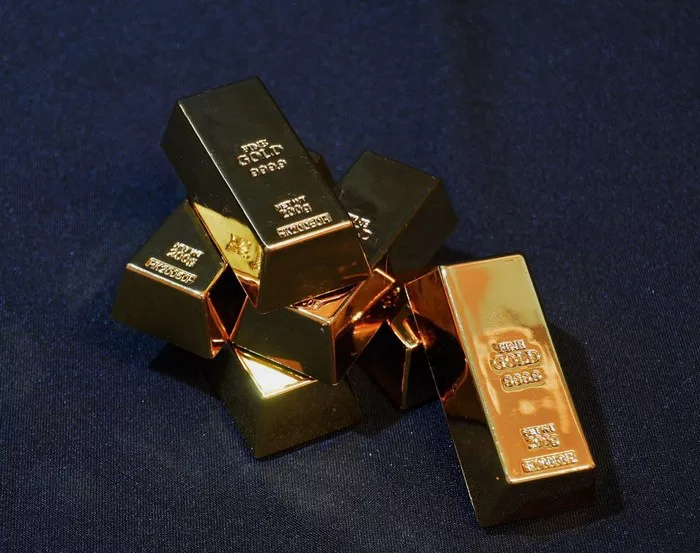In times of economic uncertainty, investors often turn to precious metals as a safe haven to protect their wealth. Precious metals, such as gold, silver, platinum, and palladium, have long been regarded as reliable stores of value due to their intrinsic properties and limited supply. Understanding how these metals behave during a recession can provide valuable insights for investors looking to safeguard their portfolios. In this comprehensive guide, we’ll delve into the dynamics of precious metals during recessions, their historical performance, and strategies for navigating the market.
The Role of Precious Metals in Economic Downturns
During recessions, traditional investments like stocks and bonds can become volatile, leading investors to seek alternative assets for stability. Precious metals often fulfill this role due to their perceived intrinsic value and their historical performance during times of economic turmoil. Gold, in particular, has earned a reputation as a “safe haven” asset, as it tends to retain its value or even appreciate when other markets decline. This is because gold is seen as a hedge against inflation and currency depreciation, making it attractive to investors seeking to preserve purchasing power.
Similarly, silver, platinum, and palladium also exhibit properties that make them appealing during recessions. Silver, often referred to as “poor man’s gold,” can see increased demand for both investment and industrial purposes during economic downturns. Platinum and palladium, primarily used in industrial applications such as catalytic converters, may experience fluctuations in demand based on economic activity but are still considered valuable due to their scarcity and unique properties.
Historical Performance of Precious Metals During Recessions
Examining the historical performance of precious metals during recessions provides valuable insights into their behavior as investment assets. Looking back at major economic downturns, such as the 2008 financial crisis, we can observe distinct patterns in how precious metals react to market conditions.
During the 2008 financial crisis, for example, gold experienced a significant increase in value as investors sought refuge from the turmoil in traditional markets. From 2007 to 2009, the price of gold surged by over 25%, reaching new highs amid widespread economic uncertainty. Silver also saw notable gains during this period, albeit with higher volatility compared to gold. Platinum and palladium, while affected by the broader economic downturn, demonstrated resilience due to their industrial applications.
Strategies for Investing in Precious Metals During Recessions
When considering investing in precious metals during recessions, it’s essential to develop a well-thought-out strategy that aligns with your financial goals and risk tolerance. Here are some strategies to consider:
1. Diversification: Including precious metals in your investment portfolio can help diversify risk and reduce overall volatility. By allocating a portion of your portfolio to gold, silver, or other precious metals, you can offset potential losses in other asset classes during economic downturns.
2. Long-Term Perspective: While precious metals can provide short-term protection during recessions, their value may fluctuate over time. It’s crucial to adopt a long-term perspective when investing in precious metals and not to react impulsively to short-term market movements.
3. Physical vs. Paper Assets: Investors can choose to invest in precious metals through physical bullion, such as coins or bars, or through paper assets such as exchange-traded funds (ETFs) or mining stocks. Each approach has its advantages and disadvantages, so consider factors like liquidity, storage costs, and counterparty risk when making your decision.
4. Monitor Market Trends: Stay informed about macroeconomic indicators, geopolitical developments, and monetary policy decisions that could impact the price of precious metals. By keeping abreast of market trends, you can make more informed investment decisions and adjust your strategy accordingly.
5. Consult with a Financial Advisor: If you’re unsure about how to incorporate precious metals into your investment strategy, consider seeking guidance from a qualified financial advisor. A professional advisor can help assess your financial situation, goals, and risk tolerance and recommend suitable investment options.
Conclusion
In conclusion, precious metals can play a valuable role in investors’ portfolios during recessions, providing stability and diversification in times of economic uncertainty. Gold, silver, platinum, and palladium have demonstrated their resilience as safe haven assets, historically retaining their value or even appreciating during periods of market turmoil. By understanding the dynamics of precious metals and implementing a thoughtful investment strategy, investors can navigate recessions more effectively and safeguard their wealth against economic downturns.
FAQs
Q1: Are precious metals always a safe investment during recessions?
A1: While precious metals like gold often perform well during recessions, they are not immune to market fluctuations. Factors such as supply and demand dynamics, geopolitical events, and investor sentiment can influence the price of precious metals. It’s essential to conduct thorough research and consider your investment goals and risk tolerance before allocating funds to precious metals.
Q2: How do I invest in precious metals if I’m concerned about storage and security?
A2: Investors concerned about storing physical bullion can explore alternative options such as investing in precious metals ETFs or purchasing shares of mining companies. These paper assets provide exposure to precious metals without the need for physical storage, offering greater convenience and liquidity. Additionally, many reputable custodians offer secure storage solutions for physical bullion for investors who prefer to hold tangible assets.
Q3: Can I expect the same returns from investing in precious metals during every recession?
A3: While precious metals have historically performed well during recessions, past performance is not indicative of future results. Economic conditions vary, and the factors influencing the price of precious metals can change over time. Additionally, returns on precious metal investments depend on various factors, including the timing of purchases, market sentiment, and individual investment strategies. As with any investment, it’s essential to conduct thorough research and exercise caution when investing in precious metals.


